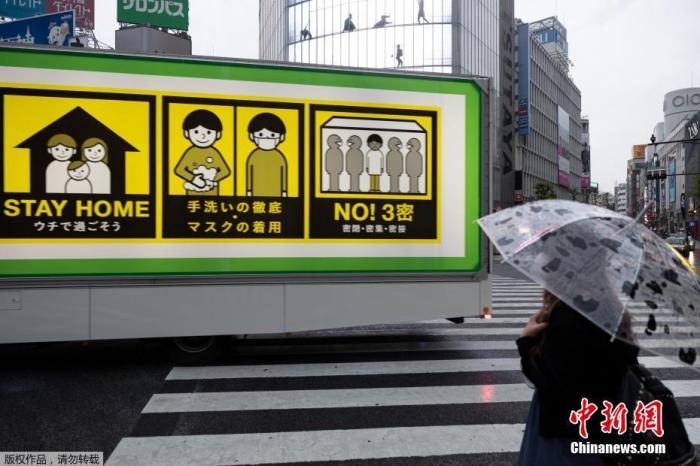China News Service, August 13th. According to a report by the Japan Broadcasting Association (NHK), at an epidemic monitoring meeting held in Tokyo, experts pointed out that the epidemic has expanded at an unprecedented rate and the new crown epidemic has been in an uncontrollable state.
Infections are raging at disaster levels, and the medical system is seriously malfunctioning.
Data map: A truck equipped with a screen for preventive measures against the new crown virus drives past Shibuya intersection in Tokyo.
At the meeting, experts said that both the infection situation and the medical system in Tokyo are at the highest level of alert.
Japan’s Kyodo News Agency reported that on the 12th, 18,889 new coronavirus infections in Japan were newly diagnosed, exceeding the record of 15,813 on the 11th, a record high for two consecutive days.
In addition, the number of newly diagnosed new crown cases in a single day reached a record high in 20 prefectures, including Miyagi, Osaka, Okinawa, etc., not only in the metropolitan area, but the epidemic has clearly spread across Japan.
At the same time, on the 12th, the number of newly infected new crowns in 15 prefectures including Fukushima and Ibaraki in Japan exceeded the maximum expected number of people in a single day.
In Okinawa and Shizuoka prefectures, 63% and 57% of the estimated number were exceeded.
According to Kyodo News, the prefectures and prefectures have formulated plans to secure beds in emergency situations based on the expected number of people.
Exceeding the number of people envisaged means that the foundation of the plan is broken, and the medical system is in a very dangerous state.
The epidemic has yet to show signs of subsiding, and emergency beds may lead to a further increase in the number of home convalescents, and an increased risk of disease mutations.
At the epidemic monitoring meeting, experts pointed out that as of the 11th, there were 197 severely ill patients with the new crown.
It is expected that the number of patients who will need artificial respirators will increase significantly to 461, an increase of 1.4 times within a week.
"The insufficient number of beds in ICU etc. is worrying."
According to reports, after the meeting, the Governor of Tokyo, Yuriko Koike, said: "The Obon Festival is about to begin. I hope that during this period, citizens can implement the home policy and suspend their travel and return home plans. Because of the reduction of interpersonal relations. People’s contact can reduce infections, so in terms of the flow of people, I hope it can be reduced to 50% before the emergency declaration.”
According to the Japan Broadcasting Association (NHK), with the rapid spread of the epidemic, the number of admission requests from health stations in Tokyo to the Tokyo Hospital Coordination Headquarters has rapidly increased.
As of the 11th, the average number of 7-day admission requests reached 608, which was 1.35 times the 450 requests on August 4, setting a new record since the epidemic.
According to reports, 737 people submitted admission requests on the 11th.
Among them, nearly 80% of them were transferred to the next day or later due to the inability to coordinate the admission immediately.
The Japan Broadcasting Association (NHK) quoted Masataka Inoguchi, vice president of the Tokyo Metropolitan Medical Association, as saying: "Due to the surge in the number of severely ill patients with the new crown, emergency medical resources are very tight. Unfortunately, some patients have died while recuperating at home. We have tried every means to help patients who are recuperating at home, but unlike hospitalization, we cannot do everything. This is like a disaster situation."

